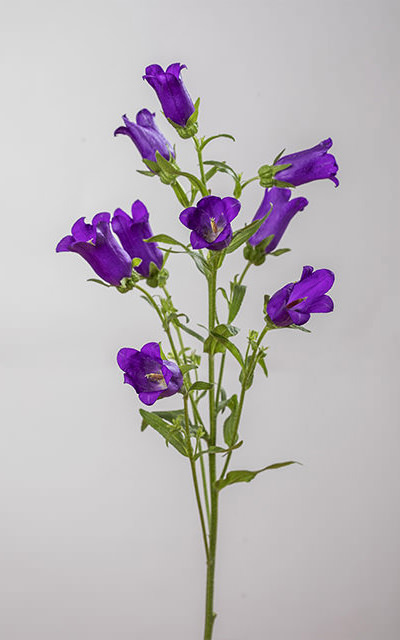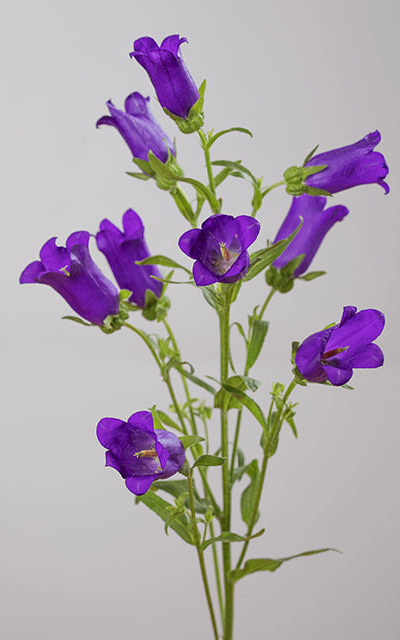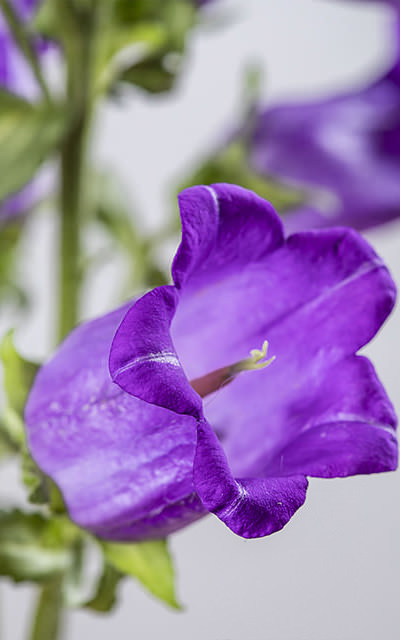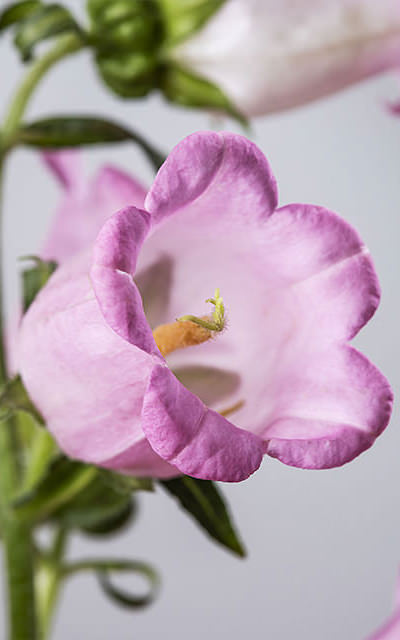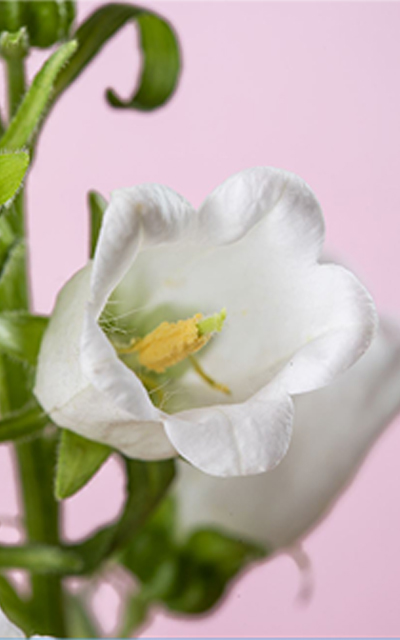Champion II
- Large flower head Campanula with high germination rate compared to other varieties
- The Champion II series also have a delicate and elegant look but are very strong and come in a variety of colors
- Annual blooming habit – only requires day length manipulation and moderate growing temperatures
Suite
Blue, Pink, White, Lilac & Champion Lavender
Culture Tips
CROP TIME
From planting to harvest: 12-13 weeks
STEM HEIGHT
76 cm
PLANTING DENSITY
64 plants /m2 net or 6 plants/ft2
PRE-PLANTING
Soil: Well drained, loose soil with no clusters, at least 25 cm (10 in) deep.
PH: 5.5 to 6.5
Netting: 2 levels.
ADDITIONAL LIGHT
Add light 7 days after planting for 45 days. Vegetative growth and floral induction are achieved with long day condition. There after flower development responds better with short day condition. The critical long day photoperiod is 14 hours, although 16 hrs work better. Light can be continuous or by pulse up to 4 hrs at night. 10 Footcandle or 110 Lux is required.
PINCH
Week 9 to 10 (to even up the spray).
IRRIGATION
Apply an average daily volume of 5 to 5.5l/m2/day according to the soil’s humidity evapotranspiration conditions and the organoleptic evaluation.
Excess irrigation can cause pathogens development and physiological desiquilibrium.
FERTILIZATION
Excess of nitrogen can cause the plants to be susceptible to Botrytis. A general formula can be the following:
N: 120 ppm , P: 50 ppm, K: 150 ppm
Ca: 120 ppm, Mg: 50 ppm, S: 50 ppm
Fe: 1 ppm, Mn: 1.2 ppm, Cu,: 0.40 ppm
Zn: 1.20 ppm, B: 0.25 ppm.
HARVEST
Haverst when the flowers start showing color at the ends and once the petals start speading out.
POSTHARVEST TREATMENT
Hydrate in a STS solution (in a 6 cc dosis) for 2 hours and then use a solution with Chryslar professional 2 with dosis of 6 cc/l for 12 hours in a cold room.
PESTS & DISEASES
•Aphids
•Thrips sp
•Botrytis (crown rot).
•Fusarium sp (recommended to rotate crops)
•Leaf miner
•Sclerotinia
•Susceptible to “Fitotoxity” with temperatures above 20 ˚C.
